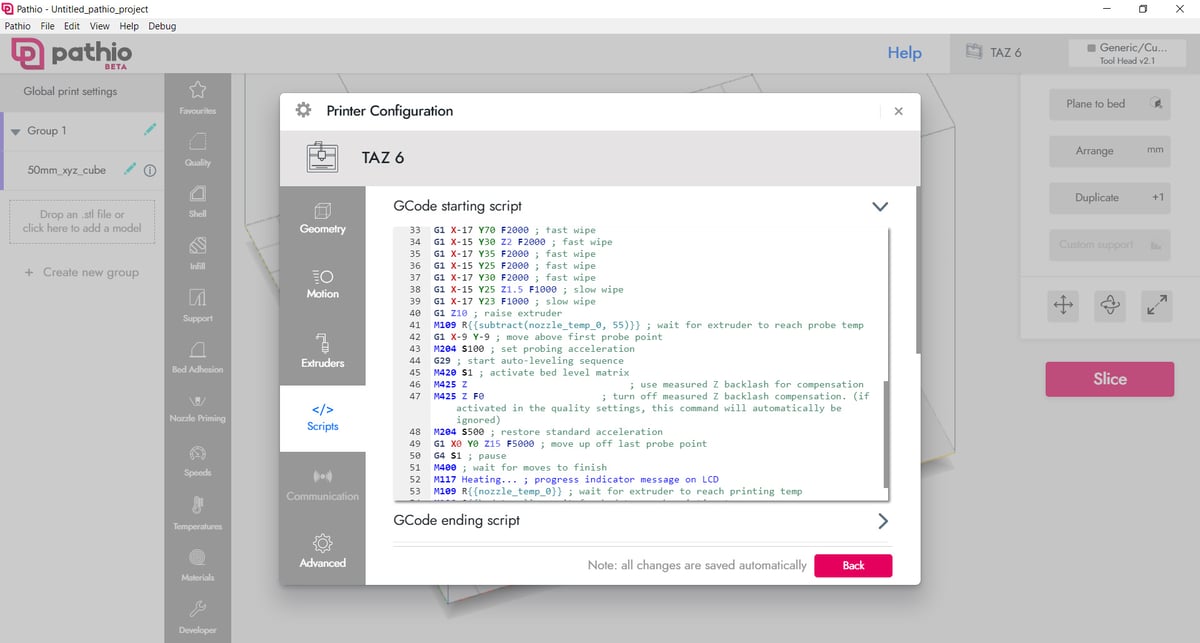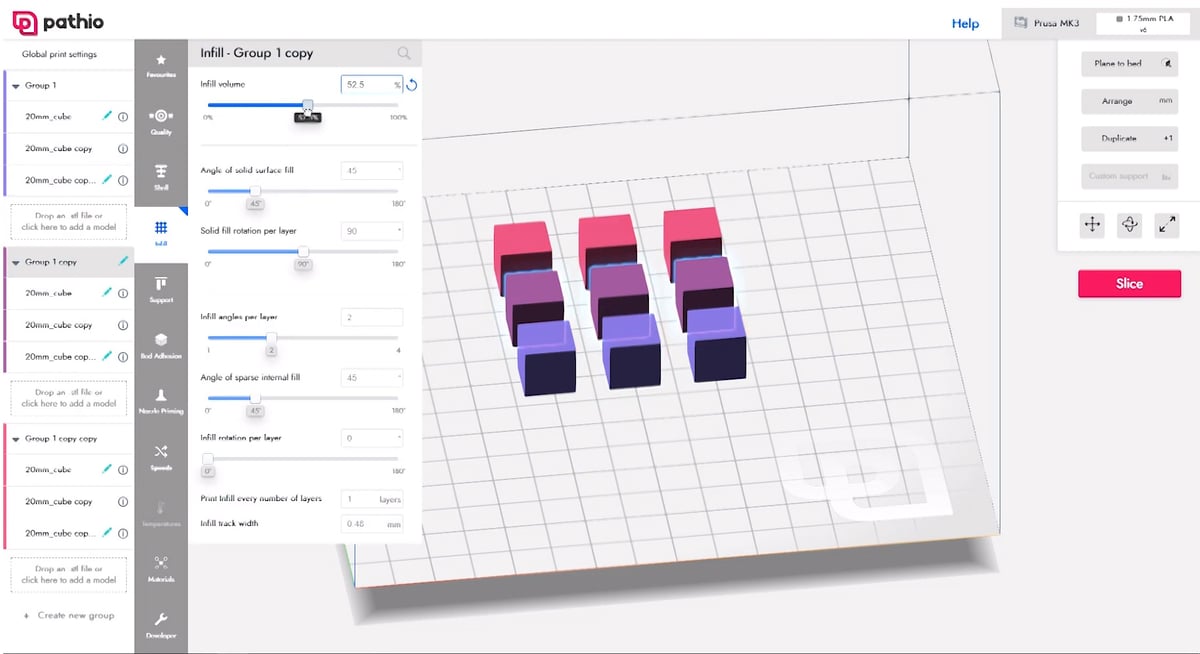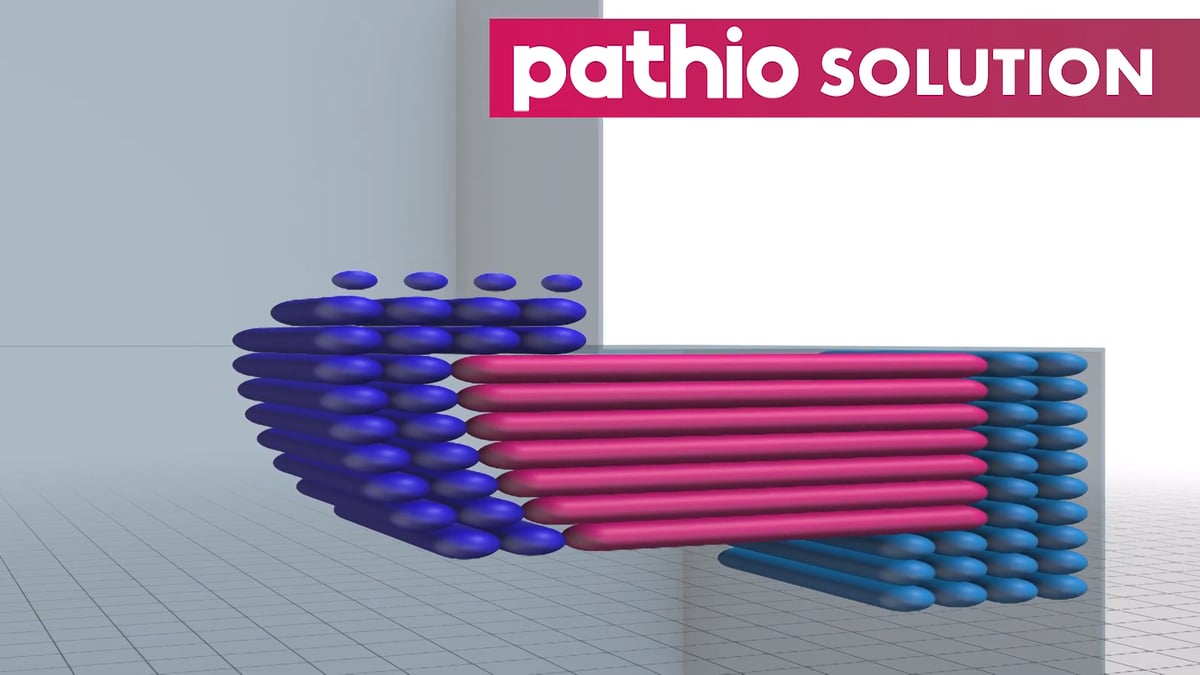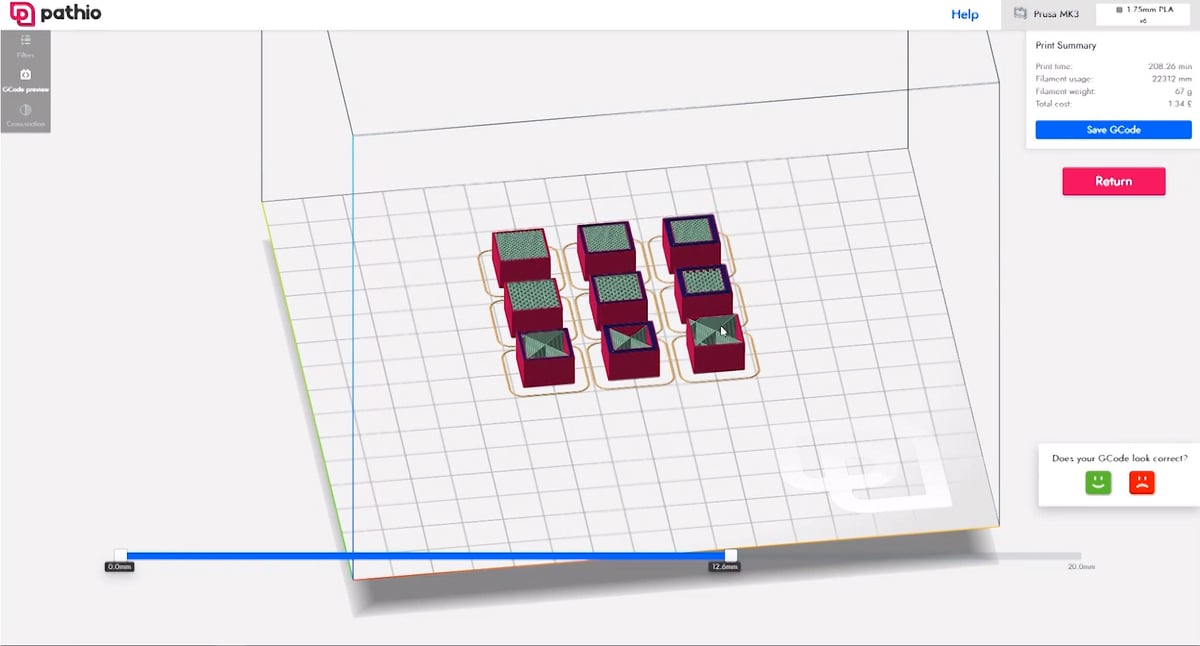Some Monday madness for you, beloved readers, as E3D reveals something rather different than has gone before. The British 3D printing OEM has been busying itself over the last 18-months, nurturing a separate company at its Oxford, UK, headquarters to stealthily work on a brand new slicer.
The new venture and project are called Pathio, with the latter being a slick slice of slicing software that has been built completely from scratch. It is a lot of what you know, and a lot of what you don’t.
“Basically, we did the absolutely insane thing,” says Joshua Rowley, Co-Founder of E3D, speaking to All3DP ahead of Pathio’s release. “We sat down and we thought, well, how should a slicer engine work, and how should the user experience be,” adds Sanjay Mortimer, also a Co-Founder “[we] designed it on paper like that, and then went ahead and implemented it. And that’s where we are today,”

The duo is keen to stress that Pathio is different from other slicers on the market, where long operational histories lead to the bloated building of systems on top of systems.
For the Pathio team, a clean slate approach was necessary, not only to rewrite what a slicer should be but to create one free from any possible bias toward a printer in particular. Think Cura for Ultimaker, and Slic3r and Prusa.
Rowley continues “they cater very, very well to the platforms that they’re developed for. But we want to have a slightly more democratic product that’s more generally suitable.“
Tool-changing, Scripts…
The idea for Pathio came from an internal E3D experiment, mixing additive and subtractive tool heads to achieve high-resolution prints.
“One of the big things that you can do with tool changing is smart scripting. When you drop one tool and you pick up another, there’s a lot that you might want to do. And so, different tools might have different functions; having one sort of tool change script isn’t necessarily always useful,” Rowley continues. “You want to be able to say, well, if it’s this tool, then do this action, because actually, it’s not a print head at all. It’s a cutting head.”

Consequently, this basis of versatile scripting spun out to become the core functionality of Pathio, going even further to include if-this-then-that conditional logic and basic arithmetic.
Those following E3D’s recent work will recognize the parallels between what this core part of Pathio enables, and the Tool-Changer motion system the company is developing.
More Reading: Radical Tool Changing 3D Printer with Motion System from E3D
The result is a malleable slicer that even in beta offers a high degree of customizability for those looking to take a deep control of the code they output for their machine.
Of perhaps equal importance to scripting in Pathio, is the manner in which you go about doing it — the design.
“We’ve got a really nice editor that has a coding autocomplete and syntax highlighting for your scripts and G-code. So, you can really develop powerful – really programs that manage how your G-code is outputted, and extra features that you can insert into actions,” Mortimer continues.
“We’re trying to build something that is inherently a power tool. I suppose that’s one of our core philosophies, is that it should be simple and beautiful to use, but it’s not in any way a dumbed down product. If you want to go and do something weird or interesting, it should be simple and elegant to dig into the guts and get on with it.”
User Interface
In terms of operation and capability, Pathio could be compared closest to Simplify3D, which affords users the possibility to configure several print processes across different extruders and models.
Certainly, this versatility for creating complex print jobs is, on the surface, very similar. However, the Pathio team has gone to great lengths to reimagine the user experience, designing a pared-back interface that simplifies things.
“What we basically have is something that’s a bit like a feature tree on the left that contains all of your models,” says Mortimer. “And you can place models into groups, and set your settings on a per group basis.”

Not unlike Photoshop and its grouping structure for applying effects and adjustments to the layers within, Pathio’s interface lends itself to nimble work.
A multidisciplinary team of eight full-timers has been assembled to develop Pathio, with hundreds of man-hours dedicated to the user interface and presentation alone.
What Can Pathio Do?
In addition to accommodating extensive scripting, Pathio boasts a few other tricks not commonly (or yet) seen in other slicers.
For one there is (or rather, will be) a favorites tab letting you keep your most used settings, no matter how obscure, front and center for quick print setup. Visible, but not configurable at the time of our demo with Pathio, the feature is an indication of the personalization Pathio introduces to slicing.
Some of the fundamentals of slicing change in Pathio, too.
The key job of a slicer is to produce G-code. And we make better G-code
Rather than analyzing a model in a stacked 2D manner, with shells a 2D value in corresponding slices, a universal shell thickness features as a variable.
Based on the value you give, Pathio generates the shell uniformly across all dimensions, something that, for example, eliminates the possibility of gaps in top layers where they meet a perpendicular wall. The process ensures that surface layers do not go unsupported from insufficient infill.
“The key job of a slicer is to produce G-code. And we make better G-code,” says Mortimer.
E3D’s day job as the leading 3D printing OEM to the masses plays a role in shaping Pathio’s finer points too. Years of analysis and development perfecting the flow of plastic from a nozzle inform how the software smoothly transitions shell to infill at corners, with one claimed benefit being the reduction of ringing on a print’s surface.

One intriguing feature that is still in development, but can be found in some form in Pathio, is a novel approach to support interface layers that draws a zig-zagging line in three dimensions. Creating tightly packed micro-contact points between support and model, the result is said to vastly improve the surface finish of the part while remaining easy to remove — two aspects you typically tradeoff against one another.
Another aspect of Pathio that is less obvious in its beta form, but nevertheless wickedly useful in our eyes is the program’s cloud connectivity for printer settings. Since your personal preferences are tied to your account rather than a specific license of Pathio on a given computer, it should be trivial to log-in to Pathio on any machine and find everything as you left it — including a growing library of community- and developer- published printer profiles.
Community, Closed Source, Cost
Speaking to the Pathio team, the feeling that this slicer has been an unstoppable passion project is palpable, for themselves as much as the familiars that have grown around E3D.
“We’ve been developing for the community that we have lived with and that we know and love, and have been part of for the last five years, basically. And we are absolutely deadset on building a community around what we’re doing.”
As such, a community forum for users to discuss Pathio and feed issues back to the dev team is in place and already populated with a handful of dedicated beta-testers in the run-up to Pathio’s official launch.
In addition to the community’s close feedback informing UI, functionality and feature improvements — not to mention the general bug-squashing — it is this group that will also fund Pathio. Albeit, at an undetermined point in the future, at an as-yet undetermined cost.
Our intent is to keep it very modest and focused
“Pathio is a closed-source app for now… And the reason for that is that we need to generate a revenue stream in order to support ourselves… [we] don’t have the luxury of Pathio being a 3D printer-producing company with a separate revenue stream,” explains Mortimer. “And at some point in the future, we’re intending to do some form of monetization that we haven’t completely figured out yet.”
Speaking to Pathio being free right now, Mortimer adds “at the moment, it’s not in a state where we think it’s worth a profit to charge money for. And we don’t know what that looks like. But our intent is to keep it very modest and focused… It would be affordable and make sense for someone that’s purchased an Ender-3.”
Available for Windows, Mac and Linux, you can check out the Pathio beta for yourself, right now.
If you do, don’t be “that guy” or “that gal”, complaining about things being buggy. It’s in beta; a lot of it works, some of it doesn’t. Get involved in the forums and contribute back.
Let us know what you think to Pathio in the comments!
License: The text of "2019 E3D Pathio Slicer – Everything We Know so Far" by All3DP is licensed under a Creative Commons Attribution 4.0 International License.